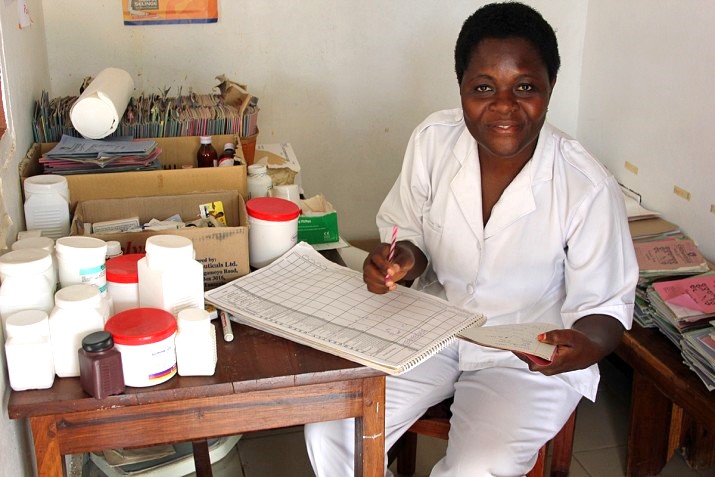Support & increasing access & continued utilization of NCD quality drugs and supplies in all benefiting facilities across Busoga sub-region (Commencing in November 2024 – 2028).

📌 Project Title:
“Support and Increasing Access & Continued Utilization of NCD Quality Drugs and Supplies in All Benefiting Facilities Across Busoga Sub-Region”
🎯 Project Goal:
To improve the availability, accessibility, and consistent utilization of quality non-communicable disease (NCD) drugs and essential supplies across health facilities in the Busoga sub-region, thereby enhancing effective management and control of NCDs such as hypertension, diabetes, cancer, and asthma.
📍 Geographic Focus:
Busoga Sub-region – covering public and PNFP health facilities across selected districts (e.g., Jinja, Kamuli, Iganga, Bugiri, Mayuge, Namutumba, Kaliro, Luuka, Buyende).
🔑 Core Program Activities:
1. Assessment and Mapping of NCD Needs and Facility Gaps
- Conduct a baseline needs assessment across targeted facilities to identify existing gaps in NCD drug availability, storage, staffing, and equipment.
- Map out supply chain bottlenecks and consumption trends for NCD medications.
- Develop a facility-level NCD service inventory.

2. Procurement and Distribution of Quality NCD Drugs and Supplies
- Procure essential NCD medicines such as anti-hypertensives, insulin, metformin, salbutamol inhalers, statins, and cancer palliative drugs.
- Procure NCD-related equipment and supplies, including BP machines, glucometers, strips, nebulizers, weighing scales, and urine dipsticks.
- Ensure timely distribution and restocking of supplies across benefiting health facilities.
3. Capacity Building for Health Workers on NCD Case Management
- Train clinicians, nurses, and pharmacists on standard treatment guidelines (STGs) for NCDs.
- Provide orientation on rational use of medicines, patient follow-up, and early warning indicators for drug stock-outs.
- Support ongoing clinical mentorship and supportive supervision in collaboration with DHO teams.
4. Community Awareness and Demand Generation for NCD Services
- Conduct community outreaches and radio programs to promote early screening and treatment-seeking behavior for NCDs.
- Mobilize community health workers and peer champions to support referrals and adherence to NCD drugs.
- Distribute IEC materials on proper NCD drug use, lifestyle modification, and diet.
5. Establish and Strengthen Facility-Based NCD Corners
- Support setup or improvement of NCD care corners within outpatient departments.
- Equip each facility with patient tracking tools, SOPs, data registers, and counseling space.
- Link NCD drug dispensing with routine follow-up and review appointments.
6. Monitoring Drug Utilization, Stock Levels, and Adherence
- Support implementation of monthly reporting tools (HMIS 029, HMIS 105) focused on NCD drug consumption.
- Use digital and paper-based systems to track drug stocks and identify early shortages.
- Promote medication adherence tracking using pill counts, refill records, and patient self-reports.
7. Stakeholder Engagement and Supply Chain Advocacy
- Facilitate quarterly stakeholder meetings with NMS, JMS, district health teams, and civil society to discuss supply challenges.
- Support policy advocacy for increased funding and prioritization of NCD drugs at district and national levels.
- Strengthen facility-pharmacy linkages and supervision structures for drug accountability.

👥 Target Beneficiaries:
- Over 150,000 NCD patients across the Busoga sub-region
- 100+ health facilities (HC IIIs, HC IVs, General Hospitals)
- Frontline health workers, pharmacists, and VHTs
- District Health Teams and Subcounty-level health authorities
📈 Expected Results:
- Improved and consistent availability of essential NCD medicines in 100% of targeted facilities
- Increased NCD patient retention and medication adherence
- Enhanced capacity of health workers to deliver quality NCD services
- Strengthened data systems for NCD drug tracking and reporting
- Greater community awareness and early detection of NCDs
🌍 Sustainability Measures:
- Integration of NCD drugs into routine district health budgets
- Strengthening of last-mile delivery systems in collaboration with NMS and JMS
- Use of community drug refill agents and VHTs to support home-based follow-up
- Digital stock management and feedback systems rolled out in collaboration with MOH’s health information systems